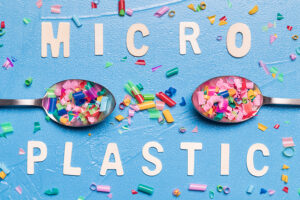
Reducing Exposure to Microplastics: A Guide for Women
In the spirit of the uplifting message from the Music Travel Love video “If Life Is So Short,” we are reminded to cherish our time, health, and the environment. With new research highlighting the effects of polyethylene microplastics on women’s reproductive health and egg quality, it is essential for women—especially those planning to conceive—to take proactive steps in their daily lives.
Just as the video inspires us to embrace life, we can make simple choices to minimize microplastic exposure. Together, let’s explore practical tips that empower us to make informed decisions for a healthier, more sustainable lifestyle—because life is too short to compromise our health or the environment we cherish.
As new research sheds light on the potential impacts of polyethylene microplastics (MPs) on women’s reproductive health, particularly regarding egg quality, it is essential for women planning to conceive or those concerned about their reproductive health to take proactive steps to minimize their exposure.
Here are some practical tips to help reduce your exposure to microplastics in everyday life:
Mind Your Containers
Opt for glass, stainless steel, or silicone containers instead of plastic ones, especially for food and beverages. Since polyethylene is prevalent in many plastic products, transitioning to safer materials can significantly reduce your exposure.
Choose Natural Fiber Clothing
Synthetic fabrics like polyester and nylon can release microplastics during washing. Opt for clothing made from natural fibers such as cotton, linen, or wool whenever possible. Additionally, look for brands that prioritize sustainability in their production processes.
Upgrade Your Cleaning Products
Many household cleaners and personal care products may contain microplastics. Choose brands that use natural or biodegradable ingredients. Be sure to read labels and avoid products that list “polyethylene” or “polypropylene.”
Limit Processed Foods
Microplastics may be present in processed foods due to packaging and production techniques. Focus on whole, unprocessed foods like fruits, vegetables, whole grains, and lean proteins. This practice will not only help reduce your exposure to microplastics but will also enhance your overall health.
Avoid Single-Use Plastics
Opt for reusable alternatives to minimize single-use plastics such as straws, utensils, and bags. This not only lowers your exposure but also contributes to combating plastic pollution.
Choose Glass or Stainless Steel for Beverages
When consuming beverages, choose glass or stainless steel over plastic bottles. Selecting materials thoughtfully can help address concerns about microplastics leaching into drinks.
Be Cautious with Personal Care Products
Some beauty products contain microbeads, which are microplastics used for exfoliation. Check the labels and choose products labeled “microbead-free” or containing natural exfoliants like sugar or salt.
Educate and Advocate
Stay informed about microplastic pollution and its effects on health and the environment. Support policies aimed at reducing plastic waste and promoting healthier, sustainable practices.
Consult with Healthcare Providers
If you have concerns about fertility or reproductive health, discuss them with your healthcare provider. They can offer guidance and information tailored to your needs.
Conclusion
As research continues to explore the relationship between microplastics and reproductive health, reducing exposure remains a sensible and proactive choice. Adopting these practices can contribute to your well-being and positively impact the environment. Let’s work together to enhance our health while being mindful of the growing plastic pollution crisis.
For more information on this crucial topic, refer to this report from the University of California, San Francisco:
Take care and be well,

Dr. Lawrence M. Nelson, MD, MBA
Director, My 28 Days® Initiative
President, Mary Elizabeth Conover Foundation, Inc.




